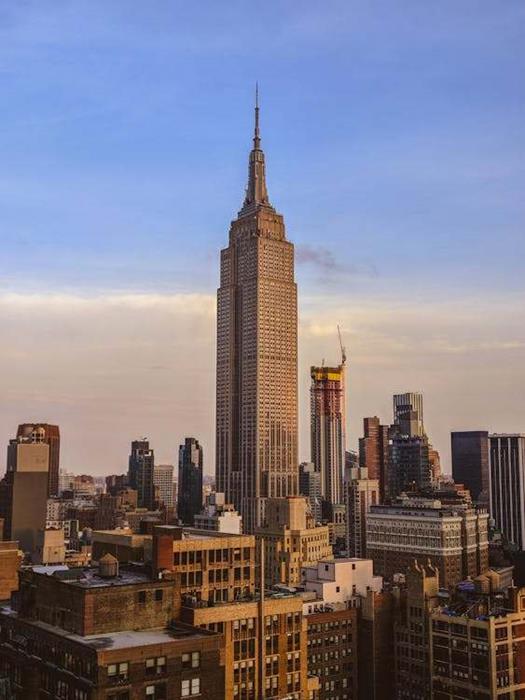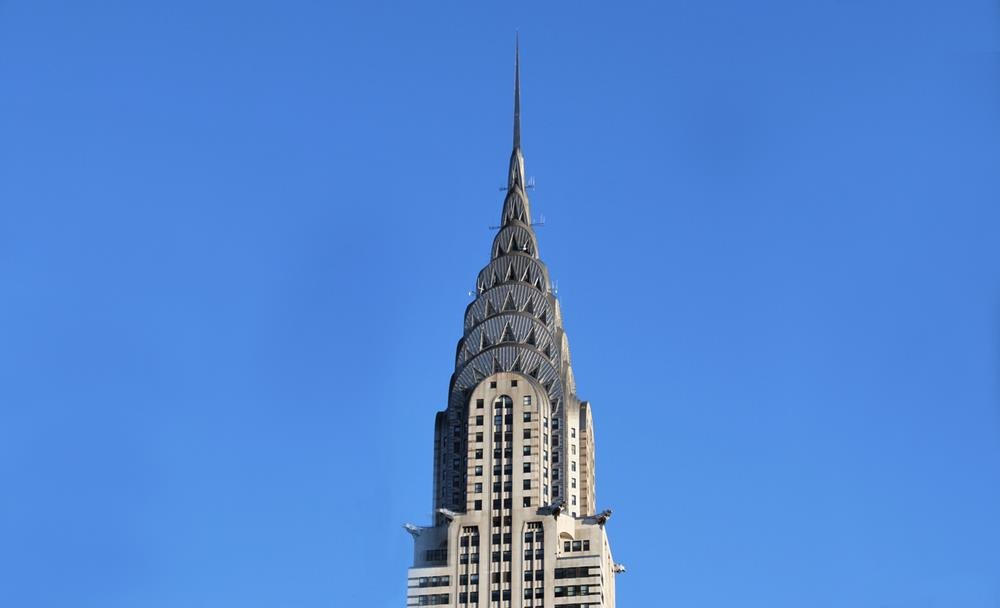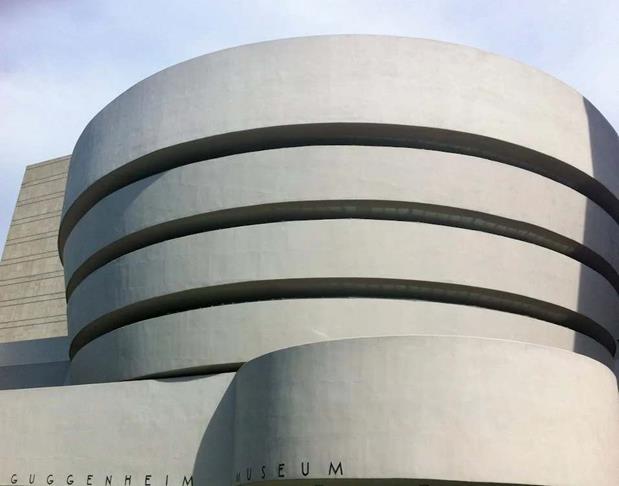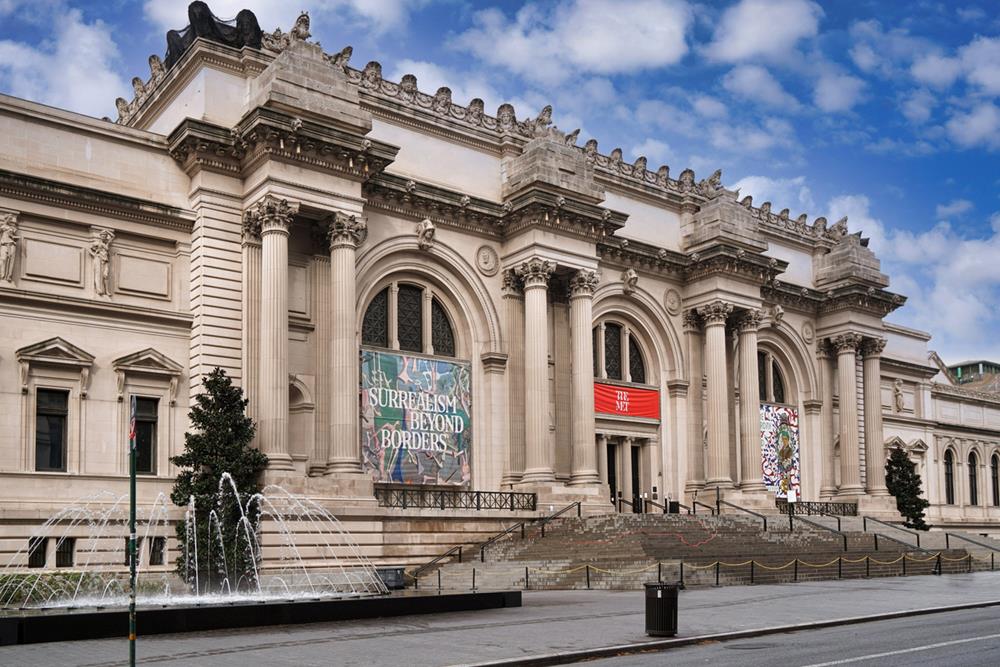New York City, often hailed as the epitome of the modern urban landscape, is woven together with towering skyscrapers, historic edifices, and architectural marvels that narrate the city’s dynamic history and its ceaseless stride towards the future. This blog post delves into some of the most iconic buildings that not only define the city’s skyline but also embody its spirit, innovation, and resilience.
The Architectural Beauty of New York City
New York City, often heralded as an architectural wonderland, presents a mesmerizing view that intertwines the grandeur of the past with the boldness of the modern era. Its skyline, a storied collection of silhouettes, stands as a testament to the city’s enduring allure and its perpetual state of evolution. From the stately elegance of early 20th-century Art Deco skyscrapers to the sleek minimalism of contemporary glass towers, each structure contributes a unique thread to the city’s vibrant urban fabric. This architectural diversity not only defines the physical landscape but also mirrors the dynamic cultural and historical narratives that have shaped the city over centuries.
Amidst this sprawling metropolis, the seamless blend of old and new creates an urban panorama that is as diverse as its inhabitants. Historic landmarks, such as the Gothic Revival spires of St. Patrick’s Cathedral, share the skyline with modern marvels like the One World Trade Center, each narrating a different chapter of New York City’s unfolding story. This juxtaposition of eras and styles fosters a distinctive urban environment where tradition and innovation coexist harmoniously. As a hub of architectural innovation, New York City continues to inspire and challenge the norms of design, cementing its place as a global icon of architectural diversity and ingenuity.
The Role of Iconic Buildings in Shaping the City’s Skyline and Cultural Identity
Architectural Milestones and the Skyline
- Defining the Skyline: Iconic buildings in New York City, such as the Empire State Building and the Chrysler Building, play a crucial role in defining the city’s distinctive skyline. These structures, with their towering heights and unique architectural designs, create a visual signature that is instantly recognizable worldwide. They act as reference points that not only dominate the cityscape but also symbolize New York’s architectural ambition and its historical race towards the sky.
- Milestones of Innovation: Each iconic building represents a milestone in architectural and engineering innovation. The construction of these landmarks often involved groundbreaking techniques and materials, setting new standards for skyscraper design. For instance, the use of a steel framework in the Empire State Building allowed it to reach unprecedented heights at the time, redefining what was possible in urban architecture.
Cultural Icons and Identity
Symbols of the Era
Iconic buildings are often reflections of the cultural, economic, and social conditions of their time. The Art Deco elegance of the Chrysler Building, for example, epitomizes the optimism and prosperity of the Roaring Twenties, while the modern, reflective facade of One World Trade Center speaks to themes of resilience and renewal in the post-9/11 era. These structures are imbued with the spirit of their times, contributing to the city’s collective memory and cultural narrative.
Inspirations in Popular Culture
New York’s iconic buildings frequently appear in films, literature, and art, further cementing their status as cultural symbols. The Empire State Building’s role in “King Kong” and the Chrysler Building’s cameo in countless movies contribute to New York City’s mythos, enhancing its identity as a place where imagination and reality converge. These landmarks not only shape the physical skyline but also the cultural landscape, influencing how the city is perceived and experienced.
Economic Catalysts and Urban Development
- Driving Urban Growth: Iconic buildings often serve as catalysts for economic development and urban revitalization. Their construction can stimulate local economies, create jobs, and attract businesses and tourists. The development of the World Trade Center complex, for example, was a significant factor in the revitalization of Lower Manhattan, transforming it into a bustling financial hub.
- Anchors in the Urban Fabric: These landmarks act as anchors in New York City’s urban fabric, often becoming focal points for public spaces, commerce, and social interaction. The area around Rockefeller Center, with its mix of retail, entertainment, and office spaces, exemplifies how iconic buildings can shape the dynamics of city life, fostering vibrant communities around them.
Architectural Diversity and Global Influence
Showcasing Architectural Diversity
The variety of styles and designs among New York’s iconic buildings showcases the city’s architectural diversity, from Beaux-Arts to Modernist and Postmodernist structures. This diversity reflects the city’s openness to experimentation and change, contributing to a rich urban landscape that is both complex and compelling.
Setting Global Trends
New York City’s architectural innovations often set trends that influence skyscraper design and urban planning worldwide. The city’s embrace of vertical living and mixed-use developments has inspired similar approaches in global metropolises, reinforcing New York’s role as a leader in shaping the future of urban environments.
Seven Iconic Architectural Wonders of New York City
1. Empire State Building
The Empire State Building, soaring above the Manhattan skyline, is more than just an iconic New York City landmark; it’s a monument to human determination, creativity, and the indomitable spirit of progress. Erected during the depths of the Great Depression, its construction was not merely an architectural endeavor but a beacon of hope, symbolizing the unyielding optimism and forward-looking ambition that characterizes the American ethos.
Architectural Marvel and Symbol of Resilience
- Construction Amid Adversity: Amid the economic turmoil of the 1930s, the Empire State Building’s rise was a bold assertion of confidence in the future. Its construction provided much-needed employment and lifted the spirits of a nation grappling with financial despair.
- Engineering Breakthroughs: Achieving the title of the world’s tallest building at the time, the Empire State Building was a marvel of modern engineering and construction techniques. Its steel framework and sleek Art Deco design set new standards for skyscraper construction, pushing the boundaries of what was architecturally possible.
Cultural and Historical Icon
- A Global Landmark: Beyond its architectural achievements, the Empire State Building quickly cemented its place in the cultural and historical fabric of not only New York City but the world. It has featured prominently in numerous films, literature, and art, becoming a universal symbol of aspiration and achievement.
- Historical Significance: The building’s history is intertwined with significant events, from its role as a beacon for returning WWII soldiers to its various illuminations that celebrate, commemorate, and bring awareness to countless causes and celebrations, further embedding it in the city’s narrative.
The Empire State Building, in all its grandeur, stands as a testament to the resilience and ambition that defined its creation. It remains a potent symbol of New York City’s dynamic spirit, a towering reminder of the capacity for greatness inherent in human endeavor. As it continues to grace the skyline, the Empire State Building endures as a beacon of ambition, a monument to the past, and an inspiration for the future.
2. Chrysler Building
The Chrysler Building stands as a testament to the artistic and architectural exuberance of the Art Deco movement, a gleaming beacon of creativity and elegance amidst the New York City skyline. Designed by William Van Alen for automotive tycoon Walter P. Chrysler, this architectural marvel was completed in 1930, embodying the lavish spirit and industrial prowess of its time.
A Symbol of Artistic Innovation and Industrial Power
- Design and Construction: With its stunning terraced crown and sleek, steel-clad facade, the Chrysler Building was a bold departure from the conventional skyscraper design. Its completion was a moment of triumph, showcasing not just architectural ingenuity but also the technological advancements of the era.
- Art Deco Elegance: The building is a masterpiece of Art Deco design, from its majestic lobby adorned with Moroccan marble and African woods to its famous spire, illuminated at night to dramatic effect. The exterior’s decorative elements, including the iconic eagle gargoyles and Chrysler radiator cap ornaments, pay homage to the building’s namesake and the era’s fascination with speed and machinery.
Brief Reign as the World’s Tallest Building
- A Race to the Sky: The Chrysler Building briefly claimed the title of the world’s tallest building, a coveted accolade that symbolized not just architectural achievement but also the aspirations of an era. This reign was short-lived, however, as the Empire State Building soon eclipsed it in height, but not in style or innovation.
- Enduring Legacy: Despite its brief tenure as the tallest building, the Chrysler Building’s impact on the city’s architectural landscape is immeasurable. It remains one of the most beloved and recognized landmarks in New York City, celebrated for its beauty and artistic detail.
The Chrysler Building continues to captivate the imagination of all who behold it, a shining example of Art Deco elegance and an enduring symbol of a bygone era’s grandeur. Its place in the city’s architectural crown is secure, not just as a structure of steel and stone, but as a beacon of artistic achievement and a poignant reminder of the enduring human desire to reach ever higher, both literally and metaphorically.
3. Flatiron Building
The Flatiron Building stands as a quintessential symbol of New York City’s architectural ingenuity and historical charm. With its distinctive triangular shape, this iconic structure has captivated the imaginations of New Yorkers and visitors alike since its completion in 1902. Designed by Daniel Burnham, a pioneer of the early skyscraper movement, the Flatiron Building emerged as one of the city’s first forays into the vertical expansion that would come to define its skyline.
A Marvel of the Early Skyscraper Era
- Innovative Design: The Flatiron Building’s unique design was a response to the peculiar wedge-shaped plot at the intersection of Broadway, Fifth Avenue, and 23rd Street. Its slender, triangular form, reminiscent of a cast-iron clothes iron, not only gave the building its name but also showcased the potential for creativity in skyscraper design.
- Engineering Feat: As one of New York City’s earliest skyscrapers, the Flatiron Building was a testament to the architectural and engineering advancements of the time. Its steel-frame construction allowed it to soar to heights that were unprecedented for office buildings, setting a precedent for future developments.
Symbol of Architectural Innovation
- Cultural Icon: Beyond its architectural significance, the Flatiron Building has become an enduring cultural icon, featured in countless films, photographs, and artworks. Its striking silhouette and elegant facade make it a favorite subject for artists and a beloved landmark for New Yorkers.
- Inspirational Legacy: The building’s innovative design and enduring popularity have inspired architects and builders worldwide, symbolizing the creative possibilities inherent in urban architecture. It stands as a reminder of the bold vision that characterized the early 20th century’s architectural boom.
The Flatiron Building, with its distinctive shape and historical significance, remains a beloved icon of New York City’s architectural landscape. More than just a building, it is a symbol of the city’s endless capacity for innovation, creativity, and adaptation. As it stands at the intersection of past and present, the Flatiron Building continues to inspire and enchant, a timeless monument to the architectural spirit that shapes New York City.
4. One World Trade Center
One World Trade Center, also known as the Freedom Tower, stands as a poignant testament to the indomitable spirit of New York City and the nation. Rising from the site of the tragic events of September 11, 2001, this architectural marvel not only redefines the city’s skyline but also embodies the collective resolve to move forward, while honoring the memories of those lost.
A Monument to Resilience
- Rebirth from Tragedy: The construction of One World Trade Center on the hallowed grounds of the original World Trade Center site was a deliberate and thoughtful process, aimed at healing and renewal. It serves as a powerful symbol of the city’s resilience in the face of adversity and a tribute to the enduring spirit of its people.
- Symbolic Height: The tower’s height of 1,776 feet was chosen with intention, echoing the year of the Declaration of Independence and underscoring the themes of freedom and democracy that are integral to the American ethos.
Architectural Excellence and Innovation
- Design by David Childs: Designed by David Childs of the renowned architectural firm Skidmore, Owings & Merrill, One World Trade Center merges aesthetic grace with cutting-edge technology. Its design incorporates advanced safety features and sustainability measures, setting new standards for skyscraper construction.
- Glass Facade and Skyward Ascent: The building’s striking glass facade is a defining feature, designed to reflect the changing skies and envelop the structure in a cloak of light. The tower’s tapered shape, culminating in a soaring spire, creates a dynamic and elegant addition to the skyline.
One World Trade Center stands as a beacon of hope, resilience, and unity, embodying the collective resolve to rebuild in the aftermath of loss. It is a reminder of the past and a symbol of the future, representing the strength and resilience that define New York City and the nation. As the tallest building in the Western Hemisphere, it not only captures the aspirations of a city but also serves as a tribute to the enduring spirit of freedom and democracy.
5. The Guggenheim Museum
The Solomon R. Guggenheim Museum, more commonly known as The Guggenheim, stands as an enduring symbol of artistic innovation and architectural daring in the heart of Manhattan’s Upper East Side. Conceived by the visionary architect Frank Lloyd Wright, this iconic structure broke the mold of traditional museum design when it opened its doors in 1959, offering a revolutionary new way to experience art.
Frank Lloyd Wright’s Masterpiece
- Innovative Design: Wright’s design for The Guggenheim was revolutionary, eschewing the conventional stacked-gallery layout in favor of a continuous spiral ramp that ascends gently from the ground floor. This design not only challenges traditional architectural forms but also redefines the museum experience, allowing visitors to view art in a flowing, uninterrupted sequence.
- Architectural Philosophy: The Guggenheim’s unique form was born from Wright’s desire to create harmonious buildings that were in tune with their environment and purpose. The museum’s open, circular design facilitates a communal art experience, encouraging visitors to engage with the artwork in a shared, continuous journey.
A New Paradigm in Museum Design
- Unidirectional Flow: The spiral ramp that characterizes The Guggenheim encourages a unidirectional flow of traffic, guiding visitors on a natural, ascending path through the museum’s exhibitions. This innovative layout allows for a seamless narrative to unfold as one moves through the space, offering a unique and immersive way to experience art.
- Integration with Art: Wright’s design philosophy extended to the belief that the building and the art it houses should exist in harmony. The Guggenheim’s spiral design and central atrium allow for artworks to be viewed from multiple angles and distances, providing a dynamic and interactive backdrop that complements the art on display.
The Solomon R. Guggenheim Museum represents a harmonious fusion of form and function, art and architecture. Frank Lloyd Wright’s visionary design has not only shaped the way art is viewed but has also left an indelible mark on the architectural landscape, making The Guggenheim a beacon of innovation and a testament to the endless possibilities of creative expression.
6. The Woolworth Building
The Woolworth Building, an emblem of architectural grandeur and historical significance, towers over Lower Manhattan as a majestic testament to the ambitions and visions of early 20th-century America. Upon its completion in 1913, it not only claimed the title of the tallest building in the world but also set a new standard for skyscraper design, merging utility with unparalleled aesthetic beauty.
The Cathedral of Commerce
- Neo-Gothic Splendor: Designed by the renowned architect Cass Gilbert, the Woolworth Building is a masterpiece of neo-Gothic architecture. Its intricate terracotta façades, adorned with gargoyles, turrets, and pointed arches, evoke the grandeur of a Gothic cathedral, earning it the affectionate nickname “The Cathedral of Commerce.”
- Visionary Patronage: The building was commissioned by Frank W. Woolworth, the founder of the eponymous retail chain, who envisioned a headquarters that would reflect the prosperity and success of his business empire. Woolworth’s ambition was not just to house his enterprise but to contribute a landmark to the city, symbolizing the soaring aspirations of the American dream.
Architectural and Historical Significance
- Pioneering Skyscraper Design: The Woolworth Building was one of the early examples of skyscraper engineering, utilizing a steel frame that allowed it to reach unprecedented heights of 792 feet. This innovation not only demonstrated the potential of skyscraper construction but also influenced the development of urban landscapes across the globe.
- A Storied Lobby: The building’s lobby is a spectacle in its own right, featuring a vaulted ceiling adorned with Byzantine mosaics, marble staircases, and ornate sculptures. This opulent entryway serves as a grand introduction to the building’s architectural magnificence, inviting visitors and tenants to step into a space that blends commercial utility with artistic splendor.
The Woolworth Building remains a towering symbol of ingenuity, ambition, and the transformative power of architecture. Its enduring presence in the New York City skyline serves as a reminder of a pivotal moment in architectural history when skyscrapers began to redefine urban spaces. As “The Cathedral of Commerce,” it stands not just as a monument to the past but as an ongoing inspiration for future generations of architects, historians, and city dwellers.
7. The Metropolitan Museum of Art
The Metropolitan Museum of Art, affectionately known as the Met, stands as a testament to the enduring power of art and culture, housed within a structure that is as iconic as the treasures it holds. Unlike the towering skyscrapers that define much of New York City’s skyline, the Met commands attention through its majestic Beaux-Arts facade and the vast breadth of human history and creativity it encompasses.
A Monument to Art and Culture
- Beaux-Arts Masterpiece: The Met’s grand entrance on Fifth Avenue, designed in the Beaux-Arts style, is a hallmark of architectural elegance and grandeur. This style, characterized by its classical forms and opulent details, perfectly encapsulates the museum’s mission to celebrate and preserve the beauty of art across ages and cultures.
- Gateway to Global Cultures: The museum’s vast collection, spanning 5,000 years of world culture, is a testament to the diversity and depth of human creativity. From ancient Egyptian artifacts to modern American art, the Met offers a panoramic view of cultural heritage, making it a pivotal institution for both scholarly research and public education.
Architectural Evolution and Expansion
- A Range of Architectural Styles: The Met’s physical structure has evolved over time, with expansions and renovations adding layers of architectural history to the original 1870s building. This architectural styles includes the modernist glass facade of the American Wing, the classical tranquility of the Greek and Roman galleries, and the medieval cloisters, each contributing to the museum’s narrative of artistic and cultural evolution.
- Harmonizing the Old and the New: The Met’s ongoing architectural evolution is a delicate balance between honoring its historic roots and embracing contemporary design. This is evident in the recent additions like the Met Breuer, which explore modern architectural expressions while maintaining a dialogue with the museum’s core mission and aesthetic.
The Metropolitan Museum of Art is more than just a museum; it is a beacon of culture and history, encapsulating the collective memory and creative spirit of humanity. Its Beaux-Arts facade invites visitors into a world where art transcends time and geography, offering a window into the myriad expressions of human creativity. As an architectural and cultural landmark, the Met continues to inspire and educate, solidifying its place as a cornerstone of New York City’s cultural landscape.
Conclusion
New York City’s buildings are more than just structures; they are symbols of the city’s relentless ambition, its rich history, and its cultural diversity. From the towering spires of its skyscrapers to the grandeur of its museums, each building tells a story, contributing to the tapestry that makes New York City a living, breathing museum of architectural wonder. Whether you’re marveling at the Art Deco details of the Chrysler Building or contemplating the resilience symbolized by One World Trade Center, these iconic buildings offer a window into the soul of one of the world’s most vibrant cities.




